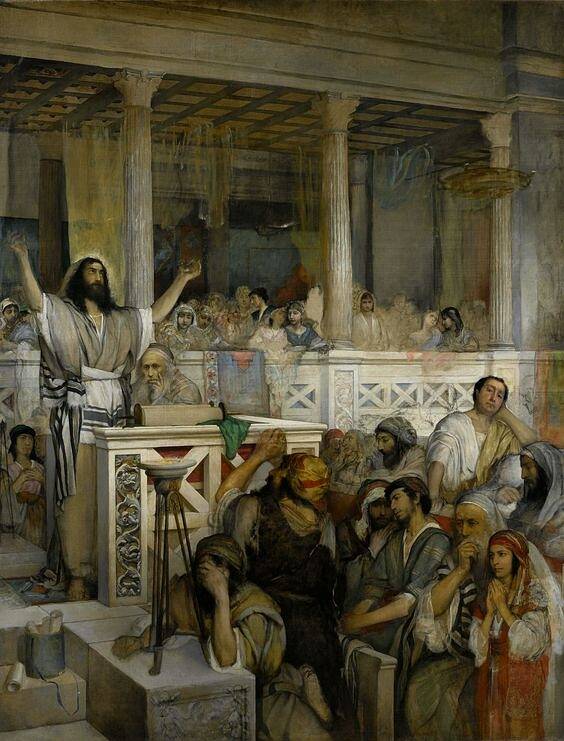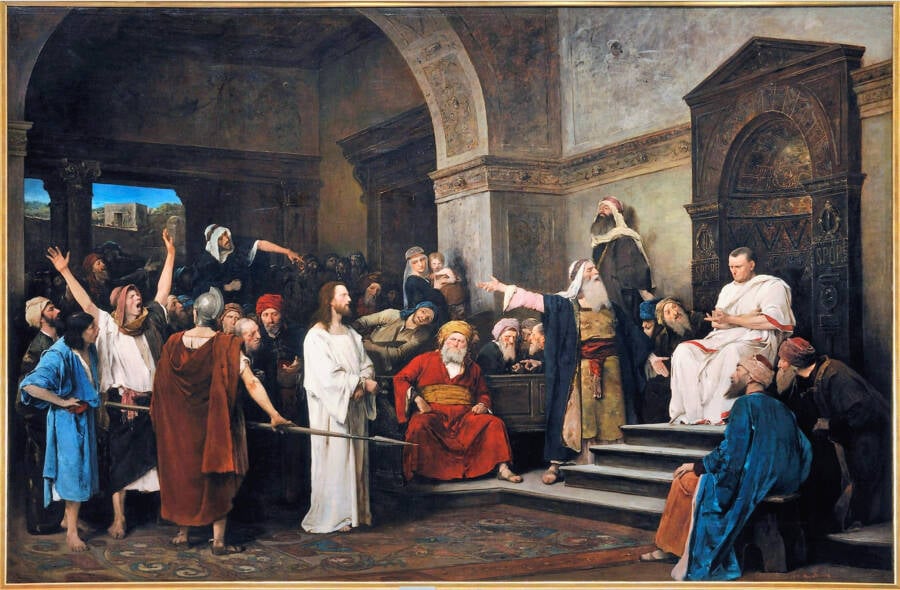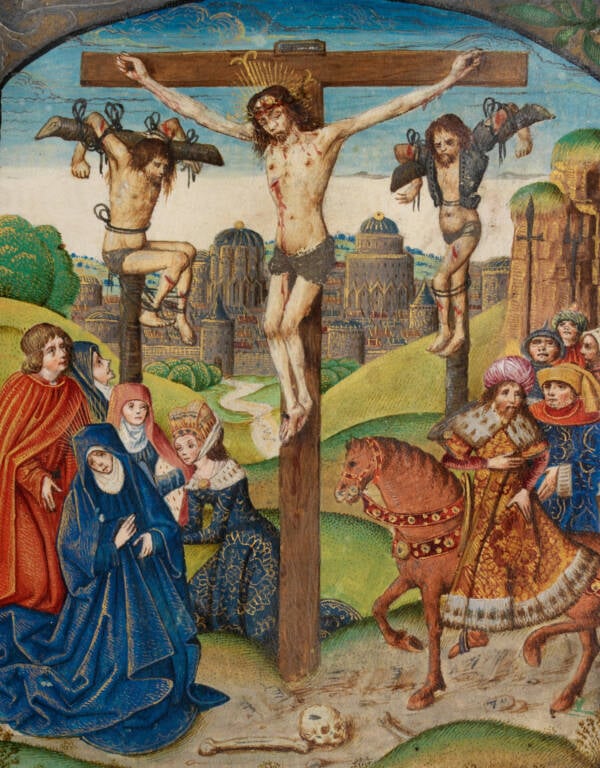Introduction
Described in the New Testament of the Bible and mentioned in various ancient sources, the death of Jesus Christ stands as one of history’s most profound and poignant events. Among the most iconic images globally is the portrayal of Jesus Christ’s crucifixion, an image gracing the walls of innumerable churches, museums, sculptures, illustrations, and adorning jewelry worn by believers. However, the question lingers: what is the genuine account behind Jesus’ crucifixion, and how did this harrowing event unfold?
Unveiling the Historical Account
The Biblical Narratives

The rich tapestry of Jesus’ crucifixion story is woven primarily from the fabric of the Biblical Gospels, penned by the evangelists Matthew, Mark, Luke, and John. These Gospel writers carefully chronicled the final moments of Jesus’ life, detailing his humiliations, and painting a vivid portrait of his six-hour ordeal on the cross.
Mysterious Details and Historical Records
Some aspects of Jesus’ crucifixion are exclusive to the Christian Bible, making them challenging to corroborate with other historical documents. Nonetheless, the annals of history from that era do offer glimpses into Jesus’ life and death, suggesting that the narratives of his crucifixion find their roots in historical reality.
Exploring the Enigmatic Figure: Who Was Jesus Christ?
Birth and Ambiguity

The Gospels of Matthew and Luke paint a portrait of Jesus’ birth in Bethlehem, with scholarly reports from Live Science indicating a probable birth between 7 B.C.E. and 1 B.C.E. Yet, the exact date of December 25th remains uncertain, and it’s speculated that his actual name might have been Yeshua.
The Traveling Preacher
While ambiguity cloaks various aspects of Jesus’ life, the Gospels do present a clear narrative of his transformation into a wandering preacher in his adult years. Embarking on a journey of preaching and healing, Jesus gained a significant following, with many coming to believe he was the long-awaited Messiah.
The Agony of Crucifixion
A Clash of Beliefs

Jesus’ growing reputation as the Messiah placed him at odds with certain segments of Jewish leadership. The leaders feared his influence and charisma, a fear that was mutual. It’s narrated that Jesus foresaw the intent of the Jewish leaders in the Roman province of Judaea (modern-day Israel and Palestine) to end his life.
The Fateful Arrest and Betrayal
The dramatic culmination of this conflict took place around 30 or 33 C.E., when Jesus faced arrest by Roman authorities. His own disciple, Judas Iscariot, infamously betrayed him for a mere 30 pieces of silver, ultimately setting the stage for Jesus’ crucifixion near Jerusalem.
The Trial and Crucifixion

Jesus’ assertion of being the “King of the Jews” led to his trial, where he was charged with rebellion against Rome. Under Roman law, this was a capital offense punishable by crucifixion. The Roman governor of Judaea, Pontius Pilate, though initially hesitant, succumbed to the public pressure and sanctioned Jesus’ crucifixion.
The Harrowing Moments on the Cross
The Crucifixion Scene
On the pivotal day of Jesus’ crucifixion, he was robed in purple, mockingly crowned with thorns, and derided as the “King of the Jews.” Bearing his cross, he journeyed to Calvary, a hill that would become synonymous with the place of his execution. There, he was destined to be crucified alongside two criminals.
The Painful Ordeal

Stripped and nailed to the cross, Jesus’ cries for forgiveness mingled with the taunts of onlookers. The Gospel of Luke records his poignant words, “Father, into your hands I commit my spirit.” The darkness that engulfed the sky and the earth’s trembling seemed to echo the enormity of the event.
The End and the Unusual Occurrences
Six excruciating hours elapsed before Jesus’ final moments. As his spirit left his body, the temple’s curtain tore, the earth convulsed, rocks split, and tombs opened. The seismic activity, as corroborated by HISTORY UK, leaves a tantalizing possibility of a cosmic response to Jesus’ death.
Theories Surrounding Jesus’ Demise
The Medical Interpretations
Modern medical experts have delved into the probable causes of Jesus’ death, speculating on conditions such as pulmonary embolism, cardiac rupture, or fatal internal bleeding. Another intriguing theory proposes that the very act of carrying the cross might have contributed.
The Final Act

A Roman soldier’s spear confirmed Jesus’ passing, a precautionary measure to ensure death. His lifeless body was then lowered from the cross and laid to rest in a tomb hewn from rock. Yet, this marked neither the conclusion nor the culmination of his narrative.
The Resurrection and Legacy
The Resurrection
The Gospels recount the astounding event of Jesus’ resurrection. Mary Magdalene and another woman discovered an empty tomb, encountering an angel who declared the risen Savior’s triumph over death. This momentous occurrence solidified Jesus’ identity as the Messiah and sowed the seeds for Christianity’s growth.
Historical Acknowledgment
Beyond the Bible, historical sources also attest to Jesus’ existence and crucifixion. Jewish historian Flavius Josephus and Roman historian Tacitus both documented aspects of Jesus’ life and crucifixion, providing a wider historical backdrop.
The Transformation of an Image
Strangely, the immediate aftermath of Jesus’ crucifixion didn’t witness the prominence of the cross as a symbol. The pivotal shift occurred around 400 C.E., coinciding with Christian Roman Emperor Constantine’s rise to power. The cross, once a brutal instrument of execution, transformed into an emblem of victory over sin.
Conclusion
Whether one subscribes to the intricate details of Jesus’ crucifixion as outlined in the Bible or maintains a nuanced perspective, the narrative’s enduring impact is undeniable. With over 2.6 billion Christians worldwide in 2023, the cross remains an emblem not only of faith but of the profound journey that unfolded through the agonizing crucifixion of Jesus Christ.
A: The primary sources include the Biblical Gospels and historical records like those of Flavius Josephus and Tacitus.
A: The cross became prominent after Christian Roman Emperor Constantine’s reign, around 400 C.E., symbolizing victory over adversity.
A: Theories vary, including medical conditions like pulmonary embolism and cardiac rupture, as well as fatal internal bleeding or the strain of carrying the cross.
A: Historical records and studies suggest the possibility of seismic activity during Jesus’ crucifixion.
A: Jesus’ resurrection confirmed his Messianic identity and laid the foundation for the Christian faith.


